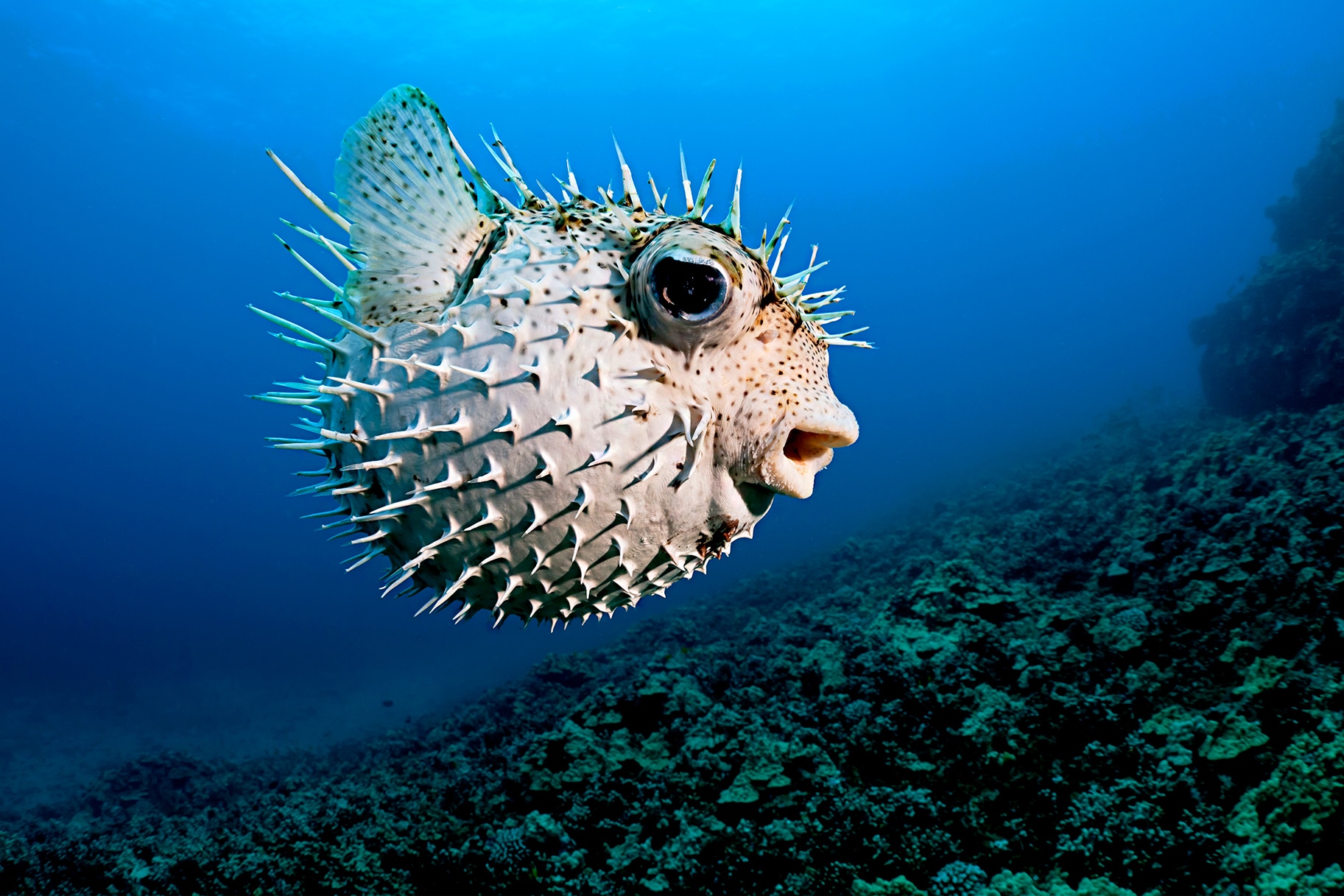
A very dark colour may be a sign of stress or illness. Fugu can also change color over time, and they get a darker or lighter color. Takifugu rubripes, for example, breeds from March to May and lays eggs attached to rocks at a depth of around 20m. Not all species are studied in detail, but the most researched takifugu is Takifugu rubripes, due to the commercial consumption and breeding of the fish. All fishes in the tetradon family have strong teeth that may grow too long if the fish cannot consume abrasive food. Their diet consists mostly of algae, mollusks, invertebrates and sometimes crustaceans.

Takifugu can be found worldwide from about 45° latitude north to 45° latitude south, mostly in salt water near coral reefs or the shore, but some species also live in fresh water or brackish water. There are 25 species belonging to the genus Takifugu (formerly known as Fugu, with the exception of one remaining Fugu species). The fish is also featured prominently in Japanese art and culture. There is currently no antidote, and the standard medical approach is to try to support the respiratory and circulatory system until the effect of the poison wears off. The poison paralyzes the muscles while the victim stays fully conscious, and eventually dies from asphyxiation. Every year a number of people die because they underestimate the amount of poison in the consumed fish parts. But because small amounts of the poison give a special desired sensation on the tongue, these parts are considered the most delicious by some gourmets. Therefore, only specially licensed chefs can prepare and sell fugu to the public, and the consumption of the liver and ovaries is forbidden.
#Fugu fish poison skin
The fish contains lethal amounts of the poison tetrodotoxin in the internal organs, especially the liver and the ovaries, but also in the skin and the testicles. The fish is highly toxic, but despite this - or perhaps because of it - it is considered a delicacy in Japan. These defenses allow the fish to actively explore their environment without much fear of being attacked.

The fish defend themselves by inflating their bodies to several times normal size and by poisoning their predators.

There are 25 species belonging to the genus Takifugu, which can be found worldwide from about 45° latitude north to 45° latitude south, mostly in salt water, but sometimes also in fresh water or brackish water. Takifugu is a genus of pufferfish, often better known by the Japanese name Fugu ( Japanese: 河豚, literally "river pig").


 0 kommentar(er)
0 kommentar(er)
